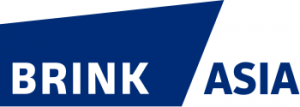Photo: Roslan Rahman/AFP/Getty Images
(Photo: The skyline of the financial business district in Singapore. SMEs comprise 99 percent of the country’s 220,100 businesses, employ two-thirds of the workforce, and contribute 49 percent of GDP.)
 Small and medium-sized enterprises or SMEs are the driving force behind Singapore’s economy. They comprise 99 percent of the country’s 220,100 businesses, employ two-thirds of the workforce, and contribute 49 percent of gross domestic product.
Small and medium-sized enterprises or SMEs are the driving force behind Singapore’s economy. They comprise 99 percent of the country’s 220,100 businesses, employ two-thirds of the workforce, and contribute 49 percent of gross domestic product.
But what is the lifeblood that keeps SMEs alive? The answer is simple—cash flow. However, cash flow concerns continue to be a vital issue for Singapore SMEs, according to the 2018 SME Development Surveyconducted by DP Information Group, part of the Experian Group. A third of SMEs (34 percent) are noted to be facing external finance-related challenges, of which their top concern is delayed payments from customers.
A Massive Financing Gap
If you are an SME owner, you understand how delayed payments often hamper cash flow, resulting in a loss of productivity and competitiveness. A lack of cash can prevent businesses from taking advantage of a spike in customer demand, fulfilling project obligations, or expanding operations. So where do you turn?
Typically, the first resort for SME loans is the bank. There’s just one problem—eight in 10 SMEs in Singapore do not qualify for traditional financing, such as bank loans. Around half of SMEs in the country earn less than SG$300,000 ($221,000) a year and have low operating cash flow, making them unqualified for bank financing. Traditional loans require businesses to have been around for three years, which cuts off funds for startups at their earliest stages, when they possibly need funding the most. They also need collateral in the form of machinery or owned real estate, which service-oriented SMEs are rarely, if ever, able to provide.
Other external sources of financing can be expensive and even difficult to obtain. Having a reliable flow of capital coming in is critical to keep the supply chain moving. This inaccessibility of loans has created a SG$20 billion financing gap for SMEs in Singapore, threatening their growth and—for some—their survival. In fact, poor cash flow is the leading cause of failure for 82 percent of small businesses.
A Solution: Leveraging Invoices through Invoice Financing
Fintech companies licensed by the Monetary Authority of Singapore are leveraging technology and delivering innovative new loan products that underwrite very differently from traditional lenders. They are leading the charge in providing innovative solutions to bridge the cash flow gap faced by SMEs. One such solution is invoice financing, a way for businesses to borrow money against the amounts due from customers.
It is an opportune time to take advantage of a low-cost, flexible invoice financing facility that can be better suited than conventional loans and lines of credit.
While invoice financing is not a new means of tapping growth capital, the use of technology and data, particularly to assess credit risk, has played a crucial role in driving financial inclusion among SMEs. Simply put, invoice financing allows SMEs to harness the value of future payments. In exchange for a loan, a business submits its invoices to lenders, who in turn collect the payments once they are due. There’s no need to wait 30, 60, 90 or 120 days to put funds from outstanding invoices to work.
With the rise of crowdfunding platforms in a burgeoning fintech era, it is an opportune time to take advantage of a low-cost, flexible invoice financing facility that can be better suited than conventional loans and lines of credit. In doing so, businesses can also optimize their accounts receivable to free up cash flow with rates as low as 1 percent per month and 30-120 days’ repayment terms.
Supporting Singapore’s Economy by Helping SMEs
From our experience of financing over SG$165 million in business financing to SMEs, the businesses that benefit the most from invoice financing often come from the marine, manufacturing, shipping, logistics, construction, services and wholesale sectors. Having to wait several weeks for accounts receivable significantly limits their cash flow and their ability to capitalize on business opportunities.
Invoice financing can serve as a viable solution, providing a short-term loan that could be approved in less than a day and does not require extensive paperwork or pledging of assets or collateral. By exchanging invoices for funding, businesses can maintain the liquidity and grow their inventory.
However, invoice financing does have its risks. The above scenarios assume that the SME meets the funding requirements and credit assessment criteria. As with all crowdfunding platforms, it is possible on the odd occasion that you may not be able to receive the funds you require within the expected timeframe, due to lack of investor funds into your facility at any point.
Crowdfunding platforms typically complement bank-lending for smaller-sized loans, so naturally there are certain limitations in terms of loan sizes and shorter tenure periods offered to SMEs. Also, due to the nature of the funding model and the risk appetite of investors, platforms are not able to offer lower rates even on a longer tenure. SMEs should also be aware of any hidden costs before they sign an agreement with such platforms.
As alternative financing platforms continue building momentum amid Singapore’s vibrant fintech ecosystem, fintech startups are complementing more traditional institutions, together driving the sustainability and growth of SMEs.
Related themes: Disruption Risk Mitigation
 Vikas Nahata
Vikas Nahata
Co-Founder and Executive Chair of Validus Capital
With Validus, Vikas leverages his experience to help accelerate Southeast Asia’s digital financing revolution.Before starting Validus Capital, Vikas served as the joint managing director of Urbana Bengal NRI. He is also a founding member of Singapore FinTech Association’s Marketplace Lending Committee, of which he is currently the co-chair.
This article was originally published in Brink Asia website.


Leave a Reply